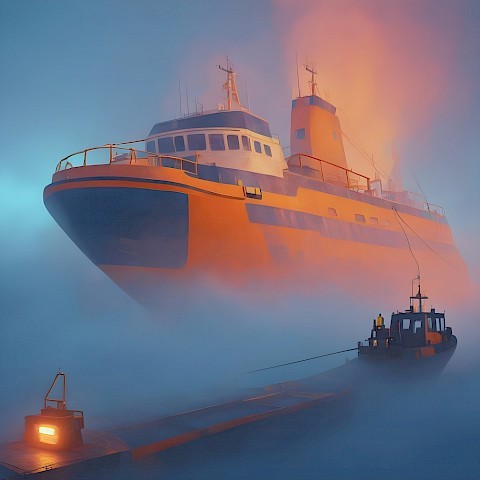|
26 VIII 2025 |
14. Exhibited Oil Paintings 1830-50
509 - Life-Boat and Manby Apparatus going off to a Stranded Vessel making Signal (Blue Lights) of Distress | |

| ||
|
Probably painted for John Nash and certainly in the sale of his pictures in 1835, when it was bought by Tiffin probably on behalf of John Sheepshanks, who gave it to the Victoria and Albert Museum in 1857. When sold in 1835 it was entitled 'Blue Lights off Yarmouth', an identification that is probably correct as Great Yarmouth, Norfolk, was the home of George William Manby whose apparatus is the subject of the picture. This consisted of a mortar that fired a stone on the end of a length of rope to provide a lifeline to a ship in distress, and for this and other services to life-saving Manby was elected as a Fellow of the Royal Society in 183I. Turner had passed Yarmouth on his way to Scotland in 1822 and had first visited it properly two years later (see T.B.CCIX). More closely related however is the 'colour beginning' of 'Firing Rockets at Yarmouth' (?) at the British Museum (T.B.CCCLXIV-134; see Graham Reynolds, 'Turner at East Cowes Castle' in Victoria and Albert Museum Yearbook, I, 1969, pp.75-8, repr. pl.13). This picture is the first of a splendid series in which a ship is seen at the mercy of the waves, man's efforts, blue lights, smoke or whatever, being contrasted to the forces of nature. It was well received at the Royal Academy. La Belle Assemblée for June 1831 called it 'a fine picture, full of nature and truth, and more in his manner of the olden time, than any thing we have seen of late', not that the work looks very conservative to modern eyes. For the Library of the Fine Arts, June 1831, it was 'a magnificent picture, warm and all life’. An image generated by an AI Machine Learning Model Property of the artist. | ||
